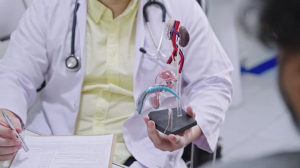Prostate and testicular diseases are topics that young men usually don’t think much about, since they are commonly considered illnesses associated with older age. In reality, this is not necessarily the case, and it’s important to pay attention to your health from a young age. Regular check-ups and early recognition of warning signs are crucial to best protect your reproductive system.
Why are men in the “risk zone”?
In general, men tend to pay less attention to their health compared to women. The reasons vary: for example, unlike women, men do not experience physiological changes such as the menstrual cycle or childbirth, which often leads them to ignore warning signs. In addition, the social role of being “strong” and “resilient,” which has been ingrained for years, prevents many from paying attention to symptoms like pain. It’s also important to note that many men are less curious and less familiar with their own bodies, believing they don’t have time to focus on such “trifles.”
As a result, men don’t take care of their bodies as they should — particularly their prostate and testicles. While almost all women visit a gynecologist regularly, men rarely go to an andrologist or urologist. Often, they seek medical advice only when a disease becomes obvious or at the urging of a partner who notices physical changes.
Urological examination — a necessity
Even today, few men visit a doctor to check the health of their genitourinary system. However, a urologist should be for a man what a gynecologist is for a woman. A specialist at the “Boholiuby” Medical Center, after a detailed medical history — including personal and family information and symptom review — usually examines the prostate, penis, and testicles, and may perform a rectal examination. Additional tests may include blood tests, transrectal ultrasound, scrotal ultrasound, or urinary tract CT scans. The ideal option is to undergo an initial specialized check-up and then follow the doctor’s recommendations regarding future examinations.
Testicular self-examination: what you need to know
In addition to urological check-ups, men should learn, starting from adolescence, to perform monthly testicular self-examinations. This is a useful practice for detecting suspicious lumps or changes. Understanding the anatomy of one’s testicles and checking them regularly helps identify any early changes in shape, consistency, or sensitivity and take timely action.
How to do it: if possible, lie down and hold a testicle in your hand, gently rolling it between your thumb and index finger for a detailed examination. First, feel the lower part of each testicle, then the rest. Check the entire area for hard nodules, round lumps, soft swellings, or other abnormalities. Repeat the same process with the other testicle and then perform the check again while standing. If possible, it’s best to do this after a warm bath or shower.
Warning signs: what to watch out for
If you notice one or more of the following symptoms, you should see a doctor: presence of blood in urine or semen; burning sensation in the penis; frequent or urgent urination; nodules, hardening, swelling, or changes in the testicular area; feeling of heaviness in the testicles; involuntary leakage of urine.
To maintain prostate and testicular health — in addition to regular medical check-ups, careful attention to symptoms, and self-examinations — it’s important to lead a healthy lifestyle: stay physically active, eat a balanced diet, and maintain proper hydration.
Number of views: 262

















